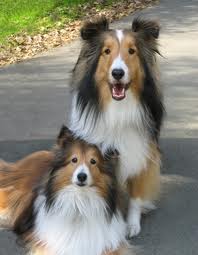So you’ve decided you want to get a dog but aren’t sure where to start?
We’re here to help!
This post will guide you through the selection process and help you ask the right questions to determine the best dog that will meet your needs.


So you’ve decided you want to get a dog but aren’t sure where to start?
We’re here to help!
This post will guide you through the selection process and help you ask the right questions to determine the best dog that will meet your needs.

At Happy Healthy Puppy, we work hard to make sure that we get the message across loud and clear: never buy a puppy that came from a puppy mill.
The San Francisco SPCA and the Jullien Brothers and BBDO San Francisco have created a sweet and informative video about why you should never buy a puppy from a puppy mill.

There are numerous ways to adopt a dog. Breeders, Puppy Mills, Classifieds, Pet Stores, Adoption Centers, friends and relatives, etc. It is up to you to decide from where you want to buy one.
After doing a lot of research into Puppy Mills (most Pet Stores use them) we recommend to sticking with reputable breeders and adoption centers (such as shelters and the SPCA).
Don’t necessarily believe a pet store if they tell you that their puppies don’t come from a puppy mill. Pet store employees are not always well trained to spot signs of abuse and mistreatment seen in puppy mills.
Often, pet store owners and managers and their staff don’t know the conditions that their pets are bred in. Sadly, the cold reality of many puppy mills is that dogs in puppy mills are often kept in small cages, fed as little as needed to keep them alive, denied adequate medical care, and receive little or no positive human attention.
The parents are seen as breeding machines to create as much profit as possible. Many female breeding dogs are euthanized as soon as they stop producing enough puppies. The puppies are seen as little products, and given only what is needed to get them shipped to a store where they can bring in money.
Congratulations! A purebred dog can be a wonderful companion and friend. Purebreds have highly predictable physical characteristics and behaviours, so you won’t need to spend a long time searching for perfect combination.
The first thing to do is to decide on a breed of purebred dog. Even if you have a good idea of the breed you’re interested in, taking a little time to do some research can help ensure that you’ve made the right choice.
Choosing the right dog breed is pretty difficult. There are hundreds, maybe thousands of breeds. So, how do you even begin choosing dog breeds?
You probably have a general idea of the breeds that might work. Once you’ve got a good idea of the breeds you’re interested in, talk to several owners of the breeds you’d like to buy. This will help you greatly when choosing the right breed of dog.
Breeds vary enormously in personality, and it’s crucial to consider if a breed’s personality matches you and your family’s needs. Different breeds were developed for different functions, and this can greatly influence their behaviors, so choosing dog breeds is a pretty difficult task.
How small is a small dog? Small dogs weigh about 12 to 30 pounds. Small dog types are a terrific choice for someone in a smaller house or apartment, or who would have trouble physically caring for a larger dog. Small dog types may shed less and give off less allergens than larger dogs (simply because they have less hair and a smaller body).
Small dog breeds tend to live, on average, about 14 years. Some small dog types live much longer, and some Terrier breeds can easily live to be 20 years old.
Small dog types tend to have some health issues, but these are usually related to specific breed characteristics, rather than their smaller size. Dachshunds, for example, tend to have spinal problems that result from breeding for their long bodies, and Pugs often have breathing problems that come from breeding for their unusually short noses.
Thinking about a long-haired dog? There’s a lot of grooming. But, surprisingly, some short haired dog breeds can shed a lot as well!
For the most part, getting a long haired or short haired dog is simply a matter of personal experience. Some people just love the look of luxurious long fur on a dog, and other people see it only as a bother.
Long-haired dogs usually require more grooming time to keep their fur free from mats and looking good. So, if you get a long-haired dog breed, you may end up spending more time at the groomers, or brushing your long-haired dogs fur yourself. Just be aware that short-haired dog breeds don’t necessarily shed less than long-haired dogs.

One of the kindest, most responsible ways to get a dog is to adopt a dog that’s unwanted. Adopting a dog today is quite easy
Many people don’t want to adopt a dog from a rescue or animal shelter because they think of a used dog like a used car. After all, who wants someone else’s mistake and problem? Not true – when you adopt a dogs life improves immeasureably.
Truth is, most dogs at shelters are wonderful pets just waiting for someone to love them. They’ve ended up at the shelter because of their owners’ divorce or allergies, the owner becoming ill or unable to care for them or moving, a poor match with their owner (for example, a relaxed dog that only wants to hang out on the couch, matched with an owner who wants a running companion), or a hundred other reasons that are not the dog’s fault.

The best dogs for children? Simple. Breeds that are not aggressive.
While dogs and children seem to go hand in hand, there are actually quite a few things to consider when getting a dog if you have little kids in the house. Not every dog is well suited to life with children, and not all children are suited to life with a dog.